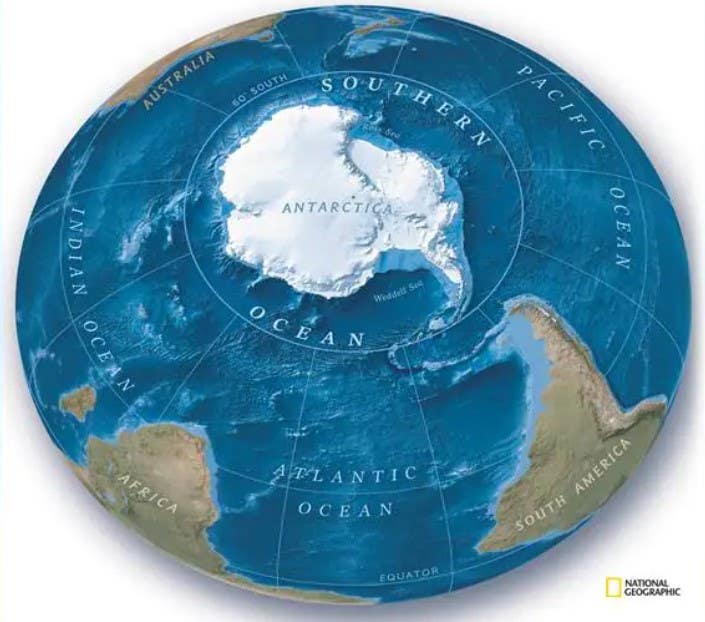Earth now has a 5th ‘Southern Ocean’ according to National Geographic
The decision coincides with the launch of a new initiative to inform, inspire and empower people to live more lightly on the planet.

[June 8, 2021: Namrata Agarwal]
Millions of children around the world have grown up memorizing basic facts about geography: there are seven continents and four oceans.
Until now.
On World Oceans Day, National Geographic announced that it would acknowledge a fifth ocean - the Southern Ocean. Thus far four oceans have been known: Atlantic, Pacific, Indian, and Arctic.
“The Southern Ocean has long been recognized by scientists, but because there was never agreement internationally, we never officially recognized it,” National Geographic Society Geographer Alex Tait said in a report on published on National Geographic's official website.
The decision and empower peopleto announce the new ocean coincides with the launch of Planet Possible, National Geographic's new initiative to inform, inspire to live more lightly on the planet.
The Southern Ocean is a vital home for marine ecosystems and a focal point for the southern hemisphere. It directly surrounds Antarctica, extending from the continent's coastline to 60 degrees south latitude, excluding the Drake Passage and Scotia Sea. The ocean's borders touch three of the four other oceans that exist on Earth — the Atlantic, Indian and Pacific.
But what makes the Southern Ocean different from the others is that rather than being largely defined by the land that surrounds it, this body of water is unique because of a current that lies within.
According to National Oceanic and Atmospheric Administration (NOAA), the Southern Ocean covers 30 percent of the Earth's ocean surface. It is made up of the waters encircling Antarctica.
The Southern Ocean's latitudinal boundary of 60 degrees south is roughly the same boundary as the Antarctic Circumpolar Current (ACC), which, according to National Geographic, brings about colder and less salty water than what is found just north of the region. This current, estimated to be approximately 34 million years old, is what makes the ecology of the Southern Ocean so distinct, providing a unique habitat for thousands of species, National Geographic said in its magazine.
Four oceans or five? It's #WorldOceansDay? and National Geographic is making a change to recognize the Southern Ocean as a fifth official ocean in our atlases and maps! https://t.co/HSHRUAyWuE
— National Geographic (@NatGeo) June 8, 2021
National Geographic moved forward when both the need to put more focus on the region's peril and the need for conservation became imminent.
Antarctica has been facing the brunt of climate change. National Geographic said that water moving through the ACC is warming, and the society hopes the new recognition will help with conservation efforts. The World Wildlife Fund says on its website that the water's temperatures vary between 10 degrees Celsius and -2 degrees Celsius, and that if the Southern Ocean warms just by 2 degrees, it could reduce ice coverage up to 30% in key areas. Penguins, birds and other animals rely on the ice for breeding.
In 2000, the boundaries of the ocean were proposed but all countries did not agree to it thus making it difficult to be recognised by the International Hydrographic Organization (IHO).
It's going to be hard for regular travelers to add the Southern Ocean to their bucket lists. Travel here is difficult, but not impossible -- basically, you'll need to join a ship going to Antarctica.
And be sure to pack your anti-nausea pills, because the water is notoriously choppy.
Like these kind of feel good stories? Get the Brighter Side of News' newsletter.
Tags: #Global_Good_News, #New_Discovery, #Oceans, #The_Brighter_Side_of_News



